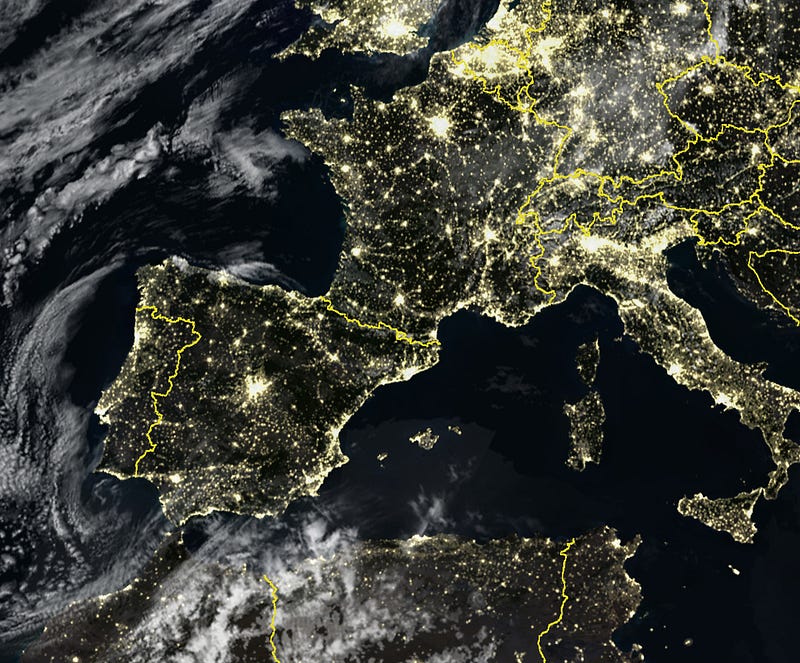Forget Comcast. Here’s The DIY Approach to Internet Access: Giufi.Net
Joyce Park stashed this in Tech biz
Stashed in: Awesome, DIY, Medium, Comcast, Net Neutrality, Backchannel
Ordinary citizens in a mountainous area of Spain got tired of waiting for the state to wire them up, and decided to do it themselves.
Good to know a community can still make its own Internet.
You can see the snow-capped Pyrenees mountains from Gurb, about 75 kilometers north of Barcelona. It’s a quiet farming community of 2,500, and in most ways there’s nothing special to set it apart from many such towns across the Catalonia region of Spain.
So why do people like me eagerly journey to Gurb? Because it’s the birthplace of Guifi.net, one of the world’s most important experiments in telecommunications. Guifi is a community network that has long since transcended its local roots. From a single node more than a decade ago, it has become a vast mesh-and-more system linking tens of thousands of people in hundreds of communities to each other and the global Internet. In the U.S. most of us go online via Comcast, AT&T, Time Warner Cable or other telecom giants to run Facebook, shop, watch videos and check our email. In Gurb and other communities, Guifi is the on-ramp to the fabled information superhighway.
For people who want to see an Internet at least partly liberated from the grip of rapacious, government-connected telecommunications giants, Guifi is one of the most hopeful developments to date. Its core values, ownership, and operations are testament to the idea that you and I, and our communities, can — and should — control how we communicate. For the tens of thousands of people using it, some at no charge, Guifi operates as well as Time Warner Cable does for New Yorkers (and maybe better).
Giufi Reflects the Tenets of Net Neutrality:
Guifi exists because a technically savvy local man, Ramon Roca, got tired of waiting for Telefonica, the Spanish telecom giant, to provide Internet access to the people of his community. He had a personal need for access. But he had a powerful second motive as well: “to help my neighbors.”
Guifi started with a single wifi node in 2004. Today there are more than 30,000 working nodes, including some fiber connections, with thousands more in the planning stages.
The project is a testament to tireless efforts — in governance, not just in adding hardware and software — by Roca and his colleagues. They’ve been unwavering in their commitment to open access, community control, network neutrality, and sustainability.
“What they’ve built is extraordinary,” says Sascha Meinrath, an open Internet activist, professor of telecommunications at Penn State University, and director of the telecom-focused think tank X-LAB. In the U.S., he told me recently, we’ve collectively decided that it’s impossible to create a community owned, operated and led service of any serious scale — that most of us need a corporate behemoth like Comcast or Verizon for our connections. Guifi, he said, proves that it can be done, at some scale, in a very different way.
At the heart of Guifi is the “Compact for a Free, Open and Neutral Network,”which starts with these principles for people who want to join the network:
You have the freedom to use the network for any purpose as long as you don’t harm the operation of the network itself, the rights of other users, or the principles of neutrality that allow contents and services to flow without deliberate interference.You have the right to understand the network and its components, and to share knowledge of its mechanisms and principles.You have the right to offer services and content to the network on your own terms.You have the right to join the network, and the obligation to extend this set of rights to anyone according to these same terms.Those terms, put into practice, have been astoundingly robust. They’ve been the basis for a community of varying constituencies, ranging from everyday people who just want communications to several dozen small Internet service providers (ISPs) that have set up shop on Guifi to provide installation, guidance and customer service for end users. It’s all a far cry from the early days, when Roca was peeved that he couldn’t connect to the Net.











12:27 PM Jul 24 2016